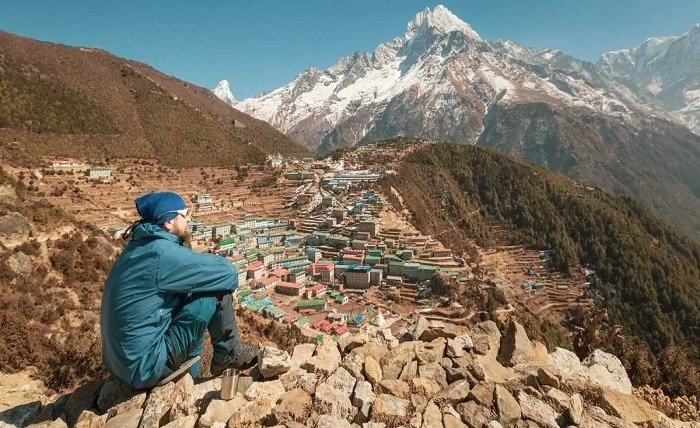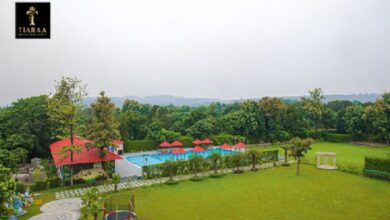Avoid Altitude Sickness at Everest Base Camp Trek

Avoiding altitude sickness is crucial when trekking to Everest Base Camp, where the thin air and high altitudes pose potential health risks. Here’s how to minimize the chances of altitude sickness and ensure a safe and enjoyable trekking experience:
Proper Acclimatization: Acclimatization is key to preventing altitude sickness. Ascend gradually, allowing your body time to adjust to the decreasing oxygen levels. Plan your itinerary with rest days at higher altitudes to facilitate this process. Listen to your body—symptoms of altitude sickness include headaches, nausea, dizziness, and insomnia. If symptoms persist or worsen, descend to a lower altitude immediately.
Stay Hydrated: Dehydration exacerbates altitude sickness symptoms. Drink plenty of fluids, preferably water or electrolyte-rich drinks, throughout the day. Avoid alcohol and caffeinated beverages, as they can contribute to dehydration.
Eat Well: Maintain a balanced diet rich in carbohydrates, proteins, and high-calorie foods. Local dishes like dal bhat (rice and lentils) provide essential nutrients and energy. Avoid heavy meals and alcohol, which can hinder acclimatization.
Medication: Consider consulting a healthcare provider about medications like acetazolamide (Diamox) to aid acclimatization. This medication can help prevent and alleviate symptoms of altitude sickness but should be taken under medical supervision.
Slow Pace: Trek at a steady, manageable pace that allows you to breathe comfortably. Avoid overexertion and take breaks as needed to catch your breath and rest.
Stay Warm and Rest Well: Cold temperatures can exacerbate altitude sickness. Dress in layers to regulate body temperature and ensure adequate sleep to support your body’s adaptation to altitude.
Monitor Altitude: Be aware of the altitude and acclimate accordingly. Familiarize yourself with altitude milestones along the trekking route to anticipate potential symptoms and adjust your pace as needed.
Emergency Preparedness: Carry a fully stocked first aid kit with medications for altitude sickness, as well as emergency contacts and travel insurance information. Ensure you have means of communication in case of emergencies.
By following these precautions and listening to your body, you can minimize the risk of altitude sickness and safely enjoy the awe-inspiring journey to Everest Base Camp, focusing on the breathtaking landscapes and cultural experiences along the way.
Slow and Steady Wins the Race!
In the context of Everest Base Camp Trek, the adage “slow and steady wins the race” holds immense importance. The high altitudes and challenging terrain demand a cautious approach to pacing. Trekking at a moderate, consistent pace allows your body to adjust to the reduced oxygen levels gradually. This approach supports better acclimatization and reduces the risk of altitude sickness, which can be triggered by rapid ascents.
By maintaining a steady pace, you conserve energy and minimize strain on your body, ensuring sustainable progress throughout the trek. It also allows for frequent breaks to catch your breath, take in the breathtaking scenery, and stay attuned to your physical condition. Moreover, a steady pace fosters camaraderie among fellow trekkers and guides, promoting a supportive and enjoyable trekking experience.
Remember, reaching Everest Base Camp is not a sprint but a marathon of endurance and resilience. Embrace the journey with patience and determination, allowing each step to bring you closer to your goal while prioritizing your health and well-being every step of the way.
Acclimatization Is Really Important!
Acclimatization is a critical aspect of trekking to Everest Base Camp due to the rapid increase in altitude. It refers to the process by which your body adjusts to lower oxygen levels at higher elevations, minimizing the risk of altitude sickness. Proper acclimatization involves ascending gradually, allowing time for your body to adapt to the changing environmental conditions.
Plan your trekking itinerary with built-in acclimatization days, especially at key points like Namche Bazaar and Dingboche, where elevations are significantly higher. During these rest days, engage in light activities to maintain blood circulation without exerting yourself excessively. Stay hydrated and monitor your health closely for any symptoms of altitude sickness, such as headaches, nausea, or fatigue.
Listen to your body and be prepared to adjust your itinerary if symptoms persist or worsen. If necessary, descend to a lower altitude to alleviate symptoms and facilitate recovery. Experienced guides play a crucial role in recognizing signs of altitude sickness and providing necessary assistance.
Prioritize acclimatization as a fundamental component of your trekking strategy to ensure a safe and enjoyable journey to Everest Base Camp, allowing you to fully appreciate the awe-inspiring landscapes and cultural richness of the Himalayas.
Hydrate Yourself and Have Plenty of Fluids!
Maintaining proper hydration is essential when trekking to EBC, where the dry mountain air and physical exertion increase the risk of dehydration. Drink plenty of fluids throughout the day, even if you don’t feel thirsty, to replenish lost fluids and support your body’s functions at high altitudes.
Water is the best choice for hydration, but electrolyte-rich drinks can also help replace minerals lost through sweat. Avoid caffeinated beverages and alcohol, as they can contribute to dehydration and interfere with acclimatization.
Monitor your urine color to gauge hydration levels—pale yellow indicates adequate hydration, while dark yellow may indicate dehydration. Carry a reusable water bottle or hydration pack and refill it whenever possible at designated water stations or lodges along the trekking route.
Proper hydration supports acclimatization, improves physical performance, and reduces the risk of altitude-related illnesses like headaches and fatigue. Make it a habit to sip water frequently throughout the day, especially during strenuous climbs or when exposed to strong sunlight.
By prioritizing hydration, you can maintain your energy levels and overall well-being during the challenging trek to Everest Base Camp, ensuring a safe and memorable adventure in the majestic Himalayas.
Make It a No-Alcohol Trek!
When trekking to Everest Base Camp, it’s advisable to abstain from alcohol consumption to optimize your health and acclimatization process. Alcohol can exacerbate the effects of altitude sickness, dehydration, and fatigue, compromising your trekking experience and overall well-being.
At high altitudes, your body metabolizes alcohol differently, leading to increased dehydration and impaired judgment. This can impede your ability to acclimatize effectively, heightening the risk of altitude-related illnesses such as headaches, nausea, and dizziness.
Opting for non-alcoholic beverages like water, herbal teas, and electrolyte-rich drinks helps maintain proper hydration levels and supports your body’s adaptation to the challenging mountain environment. These beverages provide essential fluids and minerals needed to sustain energy levels and prevent fatigue during long days of trekking.
Choosing a no-alcohol trek not only enhances your physical performance but also fosters a clear mind and heightened awareness of your surroundings. It allows you to fully immerse yourself in the natural beauty and cultural richness of the Everest region, appreciating every moment of your trekking adventure without the adverse effects of alcohol.
By prioritizing your health and well-being through alcohol-free hydration, you can maximize your enjoyment and safety while trekking to Everest Base Camp, creating lasting memories of this remarkable journey in the Himalayas.
Stick to Vegetarian Meals!
Opting for vegetarian meals while trekking to Everest Base Camp can enhance your trekking experience in several ways. Vegetarian dishes are generally lighter, easier to digest, and rich in essential nutrients needed for sustained energy and stamina during long days of trekking.
Local teahouses and guesthouses along the trekking route offer a variety of delicious vegetarian options, such as dal bhat (rice and lentils), vegetable curries, momos (dumplings filled with vegetables), and Tibetan bread. These dishes provide a balanced combination of carbohydrates, proteins, vitamins, and minerals, essential for maintaining physical performance at high altitudes.
Choosing vegetarian meals also supports sustainable and ethical practices, as meat consumption can be resource-intensive and challenging to maintain in remote mountain regions. By embracing vegetarian cuisine, you reduce your environmental impact and contribute positively to local communities and their culinary traditions.
Vegetarian meals are generally safer in terms of food hygiene and preparation practices, reducing the risk of gastrointestinal illnesses during your trek. They are also adaptable to dietary preferences and restrictions, ensuring that all trekkers can find nutritious and satisfying options along the Everest Base Camp route.
Overall, sticking to vegetarian meals enhances your trekking experience by promoting health, sustainability, and cultural appreciation, allowing you to fully immerse yourself in the natural beauty and culinary delights of the Himalayas.
Ever Heard of Garlic Soup?
Garlic soup is a well-known remedy among trekkers to Everest Base Camp for combating altitude sickness. It’s believed that garlic’s medicinal properties, including its ability to improve circulation and reduce blood pressure, can help alleviate symptoms such as headaches and nausea associated with altitude sickness.
Typically, garlic soup consists of garlic cloves, water or broth, onions, and sometimes potatoes or other vegetables. The soup is simmered to infuse the flavors and nutrients from the garlic, creating a hearty and warming dish that is both comforting and beneficial at high altitudes.
Local teahouses along the trekking route often serve garlic soup as a traditional remedy and a nutritious meal option. It’s recommended to consume garlic soup regularly during acclimatization days or if altitude sickness symptoms begin to appear. The warmth of the soup can also provide comfort in the cold mountain environment.
While scientific evidence on the effectiveness of garlic soup specifically for altitude sickness is limited, many trekkers swear by its benefits based on personal experience and local traditions. Whether for its perceived medicinal properties or simply as a comforting meal, trying garlic soup during your trek to Everest Base Camp can be a culturally enriching and potentially helpful part of your journey.
Take Your Diamox Prescription
Acetazolamide, commonly known as Diamox, is a medication often prescribed to prevent and alleviate symptoms of altitude sickness when trekking to high altitudes like Everest Base Camp. It works by speeding up the acclimatization process, allowing your body to adjust more quickly to the reduced oxygen levels.
Before starting your trek, consult with a healthcare provider to discuss the benefits and potential side effects of Diamox. Typically, the recommended dosage starts a day or two before ascending to higher altitudes and continues for several days after reaching the maximum elevation.
Common side effects of Diamox include increased urination, tingling sensations in the fingers and toes, and altered taste sensation. These effects are generally mild and diminish as your body adjusts to the medication.
It’s essential to follow your healthcare provider’s instructions regarding dosage and usage of Diamox. Keep hydrated while taking the medication and monitor your symptoms closely. If you experience severe side effects or persistent symptoms of altitude sickness despite taking Diamox, descend to a lower altitude promptly and seek medical assistance if necessary.
Diamox is a valuable tool for trekkers to Everest Base Camp, aiding in a safer and more comfortable trekking experience. Combined with proper acclimatization strategies and attentive self-care, it can enhance your ability to enjoy the breathtaking landscapes and cultural richness of the Himalayas.
Listen to Your Guide’s Advice!
When trekking to Everest Base Camp, the expertise and guidance of local guides are invaluable resources for ensuring a safe and fulfilling journey. Experienced guides possess in-depth knowledge of the terrain, weather conditions, and cultural nuances of the region, making them indispensable companions throughout your trek.
Listen attentively to your guide’s advice on pacing, acclimatization strategies, and safety precautions. They can recognize early signs of altitude sickness and provide timely recommendations for adjusting your itinerary or descending to lower altitudes if necessary. Guides also facilitate communication with local communities, enhancing cultural interactions and ensuring respectful engagement with the environment.
Trust in your guide’s judgment and follow their instructions, especially in challenging or unforeseen situations. They are trained in first aid and emergency response procedures, ready to assist you and other trekkers in case of accidents or health emergencies.
Building a rapport with your guide fosters a supportive and collaborative trekking experience, where mutual respect and communication contribute to a successful journey to Everest Base Camp. Embrace the opportunity to learn from their expertise and gain deeper insights into the rich traditions and natural wonders of the Himalayas.
Descend If the Symptoms Do Not Reduce!
Altitude sickness can manifest in various forms, ranging from mild discomfort to severe conditions like High Altitude Pulmonary Edema (HAPE) or High Altitude Cerebral Edema (HACE). Despite preventive measures, some trekkers may still experience symptoms that worsen with continued ascent.
If you or a fellow trekker develop symptoms such as severe headaches, persistent nausea and vomiting, difficulty breathing, confusion, or loss of coordination, it’s crucial to take immediate action. Descend to a lower altitude as soon as possible, as descending is the most effective treatment for altitude-related illnesses.
Inform your guide or trekking companions about your condition and prioritize safety over reaching your destination. Descending to lower altitudes allows your body to recover from the effects of reduced oxygen levels, alleviating symptoms and preventing further complications.
Monitor your symptoms closely and seek medical assistance if symptoms persist or worsen despite descending. Local guides are trained in recognizing and responding to altitude sickness, providing support and assistance during emergencies.
Preventing altitude sickness involves careful planning, proper acclimatization, and attentive self-monitoring during your trek to Everest Base Camp. Prioritize your health and well-being by responding promptly to symptoms and making informed decisions to ensure a safe and enjoyable journey in the Himalayas.
Get a Good Night’s Sleep!
Quality sleep is essential when trekking to Everest Base Camp, where physical exertion and high altitudes can impact your body’s ability to rest and recover effectively. Adequate rest promotes physical and mental well-being, enhances immune function, and supports the body’s adaptation to altitude-related challenges.
Choose accommodation options that prioritize comfort and restfulness, such as guesthouses or lodges with insulated bedding, warm blankets, and quiet surroundings. Use earplugs and an eye mask if needed to minimize disruptions and adjust to the unfamiliar sleeping environment.
Establish a bedtime routine that promotes relaxation, such as gentle stretching, deep breathing exercises, or reading before sleep. Limit screen time and stimulating activities in the evening to prepare your body for restorative sleep.
Maintain hydration throughout the day but reduce fluid intake before bedtime to minimize nocturnal bathroom trips. Avoid excessive alcohol consumption, which can disrupt sleep patterns and contribute to dehydration.
If altitude-related symptoms like headaches or difficulty breathing disrupt your sleep, consider adjusting your sleeping position or using supplemental oxygen if available. Communicate any concerns about sleep quality or health issues with your guide or fellow trekkers for support and assistance.
By prioritizing restful sleep and self-care during your trek to Everest Base Camp, you optimize your physical and mental resilience, ensuring a rewarding and memorable journey in the majestic Himalayas




